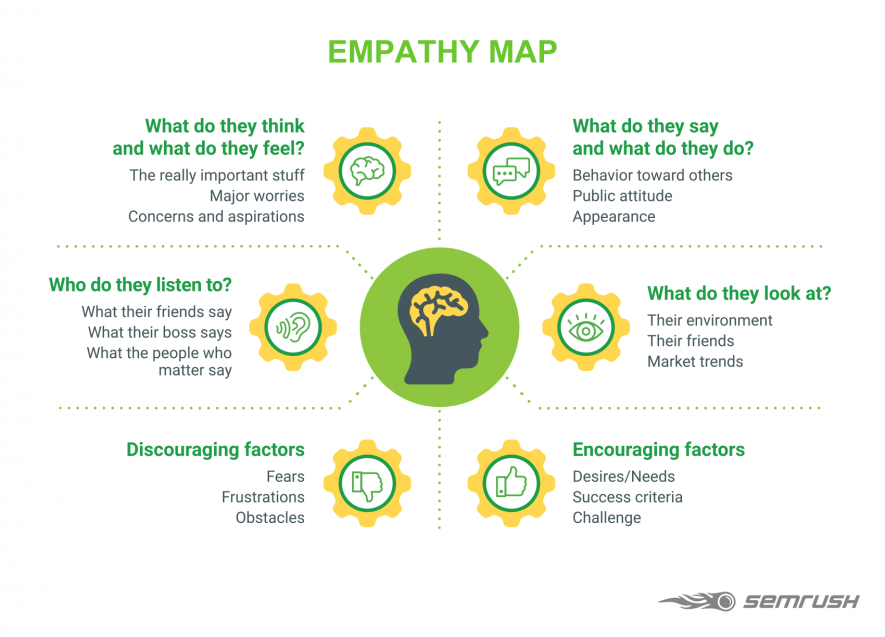
Writers and Empathy – A SEO Project Perspective
Often when we need to educate content creators about our needs for SEO success, we’ll find the contributors are from a wide variety of backgrounds and have a diversity of motivations. We, as SEO experts, always have a very limited time to communicate our content needs to the project team – people whose talents and insights are essential to strategic success. Without this collaboration in SEO writing, we end up with much-lost project energy on content that has lost its potency. It struck me recently, reading about natural language processing at Google, that SEO writing and empathetic writing are tightly aligned and, more importantly, the empathetic writing style is a great way to get the content producing team on the same page (with SEO success as a side effect!)
To that end, I’ve started dividing SEO content creation high-level task into three realms:
- Incorporating Empathy
- Targeting Demand
- Structuring Delivery
In some ways, this is a right-brain, left-brain approach. The left brain does the cold calculations required to establish a working context, such as where the search volume is – where the demand is – and how to structure the delivery of content to meet that demand (website, structured data, meta tags.) The right brain considers the broader context experienced by the searcher and their needs.

Image from SEMRUSH see link below
Incorporating Empathy in SEO Writing
What defines Empathetic Content?
- It’s written “from the reader’s perspective” or “in their shoes”
- It’s organized based on the readers’ information needs or appetite (searches.)
- It’s written for a typical reader’s vocabulary and reading level (not just the company’s vocabulary.)
- It addresses issues the reader encounters in everyday life.
- It demonstrates E-A-T (Expertise, Authority, and Trust) from your brand.
- It avoids undue demands or commitments early in the experience.
- It helps the reader connect to solutions, even if their initial search was imperfect.
This list, combined with data about where searchers are spending their time, seems to equip a wide variety of users with the fundamentals of modern SEO content writing.
Emphasizing searcher empathy in explanations of “how to write for SEO” often results in content naturally compatible with Google’s language and knowledge classification algorithms with added potential to be ranked well and used in rich results.
Targeting Demand
This is the realm of keyword research and awareness of customer needs. You do need to understand the searches being done related to the topic without getting bogged down in keywords. We’re looking at themes and intents which are apparent in the searching ecosystem. What are people searching for and what are they hoping to achieve? How does this overlap with your offering or expertise, and how can you build a bridge between the two keeping empathy in mind? If people are not searching for what you’re selling, you have to seek out tangental content opportunities where your audience shows interest.
This is not new to anyone involved in SEO, but the slight adjustment in thinking for “EC” is that we will focus our research around the empathetic goals. If you are familiar with the knowledge graph at Google, this is sort of like reinforcing the connection (edge) between problem and solution, trusting that a subsequent connection between solution provider and brand will exist. If this sounds like the long way around, it is, but the alternative is likely no connection at all.
Structuring Content
In addition, we have available various structured content approaches, such as structured markup and metadata to add richness and clarity beyond what is commonly viewed on the page. I see these as reinforcements to NLP that allows you to further clear up ambiguity without impacting the content reading experience that much. This is not a complex part of the process – we really just want to be sure the responses to the questions are clearly transported from the writing to the headings, titles and markup. If someone asks a quesiton, we want the question and answer to both be present in the content.
Natural Language and Empathetic Content
Taking this a bit further, I think that we can leverage the current state of Natural Language Processing (NLP) to increase our chances to appease search engines. I encourage you to read this post which offers a basic vocabulary on Natural Language Processing.
As you know if you read other posts I’ve written, I’m a huge fan of focusing on Q&A based content that gets to the point, which itself is empathetic as it helps a hurried reader and their information-saturated situations. NLP document processing algorithms work best in cases of clear associations between constructs such as questions and answers or assertions and proof. We know Google extensively uses NLP and classification engines and has some emphasis to the content above the fold, so I would encourage a writing style featuring skimmable and meaningful summaries early, followed by supporting details later in the document. The style I like for this content resembles the Inverted Pyramid approach used in Journalism.
Text complexity needs to be simple and understandable for the average reader (ranking around 8 on the Flesch Kincaid Grade). – SEMRush Voice Search Study
This does not restrict writers to overly abbreviated content. We aren’t just putting a tl;dr version of the content at the top of the page, but we’re considering the document in phases. I agree in this case with Neil Patel in his assertion that “Focused and Comprehensive” content suits modern search engines very well and may provide ranking advantages. I’ve just added a slight twist to the idea and love your feedback.
See also:
- Google Quality Raters Guidelines give some insights (PDF) into how Google considers Expertise, Authority, and Trust.
- You might like my earlier post about the Porous Website approach to SEO which explores SEO content writing as it relates to conversions and lead generation.
- Customer Centric Content Strategy from Content Marketing Institute has a very well considered discussion on customer empathy.
- The Ultimate Guide to Content Marketing Strategy – SEMRush
- SEMRush Voice Search Study
Image: David Goehring via Flickr used under CC 2.0 Attribution License







